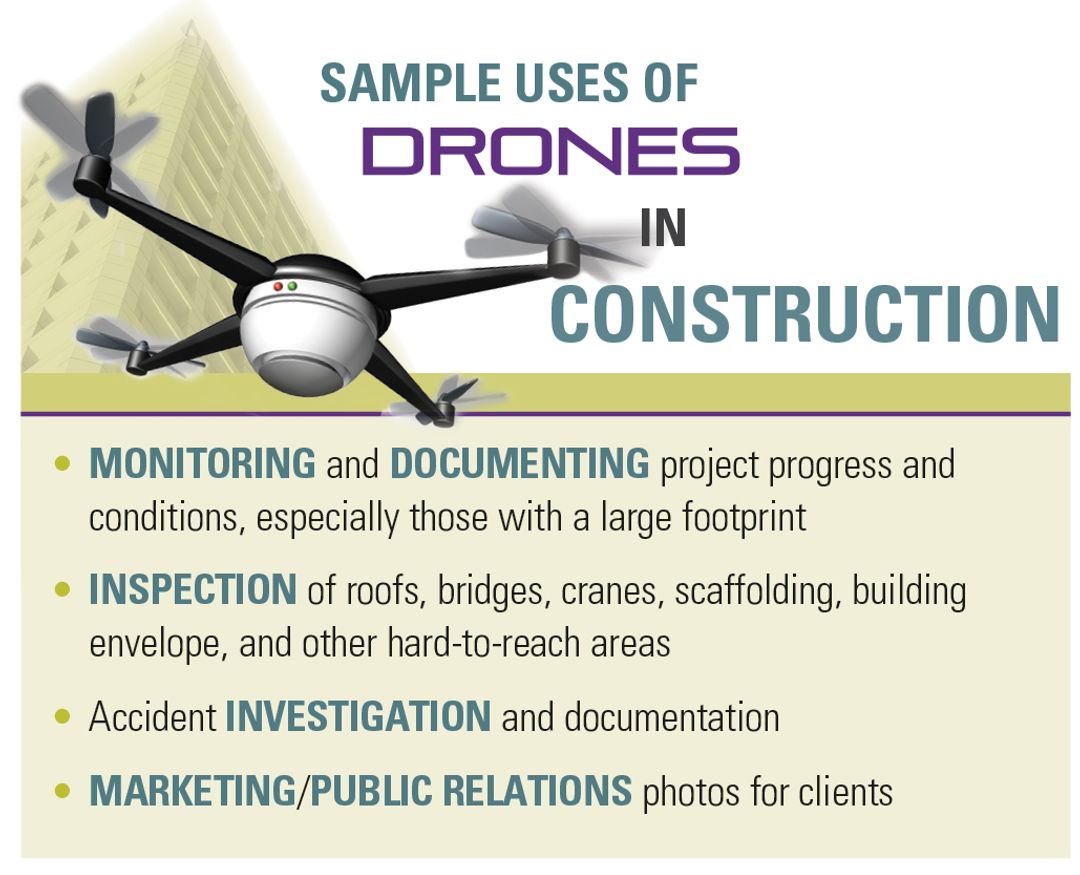Now that a final rule has been issued to regulate the use of small unmanned aircraft systems (UAS) for commercial purposes, use of this technology is expected to increase quickly. No longer will using unmanned aircraft, commonly called drones, in commercial activities require a cumbersome application seeking specific exceptions to federal aviation regulations.
As of August 29, 2016, unmanned aircraft weighing less than 55 pounds can be legally flown in commercial operations within the parameters established by the Federal Aviation Administration (FAA) in Title 14 of the Code of Federal Regulations (14 CFR) part 107, Small Unmanned Aircraft Systems.
Construction, agriculture, real estate, energy, film, insurance, photography, and retail delivery are just some of the industries that are poised to capitalize on drone capabilities. The allure of UAS is their ability to perform tasks and achieve results safer, faster, and cheaper than traditional methods.
Camera-mounted UAS provide a unique visual perspective and the ability to inspect and document physical conditions over wide areas and in hard to reach places. External components of a high-rise building or bridge can be inspected without putting a person at risk.
The once cost-prohibitive daily documentation via photographs of a project’s progress with a large footprint is now both fast and cheap. And because they are battery operated, using UAS to perform tasks that previously required another form of transportation can reduce the environmental impact of a contractor’s operations.
Despite their many uses and advantages, drones present risks of their own, some of which could be catastrophic. Contractors that choose to use this technology should be deliberate to establish and enforce safety protocols and best practices for drone use.
